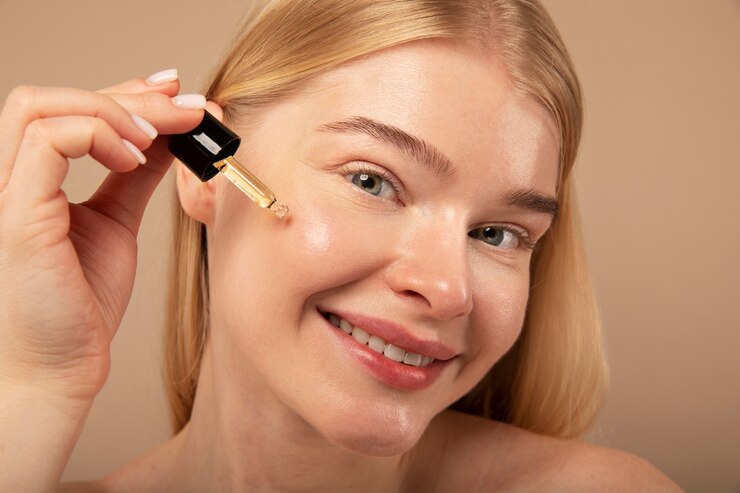
The Ultimate Guide to Face Acids: Types, Benefits & How to Use Them
Face Acids in Skincare: Types, Benefits & How to Use Them
Face acids might sound intimidating, but they’re actually some of the most powerful and effective ingredients in skincare. Whether you're dealing with acne, dullness, dryness, or signs of aging, there’s a facial acid out there that can help.
In this blog, we’ll break down the most popular types of face acids, their skin benefits, and how to use them properly.
What Are Face Acids?
Face acids are active ingredients used in skincare products to exfoliate, hydrate, brighten, or treat skin concerns like acne and pigmentation. They work at different levels of the skin and are commonly found in serums, toners, peels, and cleansers.
Types of Face Acids and Their Benefits
1. Alpha Hydroxy Acids (AHAs)
Includes: Glycolic Acid, Lactic Acid, Mandelic Acid
Best For: Dullness, pigmentation, uneven skin tone
AHAs exfoliate the surface layer of the skin.
Help fade dark spots, smooth texture, and boost glow.
Ideal for normal to dry or aging skin.
Example: Glycolic Acid Toner for glowing skin
2. Beta Hydroxy Acids (BHAs)
Includes: Salicylic Acid
Best For: Oily, acne-prone, and clogged skin
BHAs penetrate deeper into pores to dissolve oil and dead skin.
Treats blackheads, whiteheads, and pimples.
Anti-inflammatory and great for combination to oily skin.
Example: Salicylic Acid Cleanser for acne control

3. Hyaluronic Acid
Best For: All skin types, especially dry and sensitive skin
A hydrating acid that holds up to 1000x its weight in water.
Plumps and smooths the skin without irritation.
Use under moisturiser or serum for best results.
Example: Hyaluronic Acid Serum for dewy skin
4. Azelaic Acid
Best For: Rosacea, redness, acne, pigmentation
Anti-bacterial and anti-inflammatory.
Helps even skin tone and calm irritated skin.
Gentle enough for sensitive skin.
Example: Azelaic Acid Cream for redness and breakouts
5. Ascorbic Acid (Vitamin C)
Best For: Brightening, antioxidant protection
Fights free radicals and boosts collagen.
Evens out skin tone and brightens dull skin.
Use in the morning with sunscreen.
Example: Vitamin C Serum for daily radiance
6. Tranexamic Acid
Best For: Stubborn pigmentation and melasma
Reduces dark spots and evens skin tone.
Works well with other brightening ingredients like niacinamide.
Example: Tranexamic Acid Serum for hyperpigmentation
7. Retinoic Acid / Retinol (Vitamin A derivatives)
Best For: Anti-aging, acne, wrinkles
Speeds up cell turnover and collagen production.
Can be irritating, so start slow (2-3 times a week).
Always use at night with sunscreen during the day.
Example: Retinol Cream for smoother, younger-looking skin
How to Use Face Acids Safely
Start slow: Introduce one acid at a time, 2–3 times a week.
Patch test: Especially if you have sensitive skin.
Don’t mix too many acids at once (e.g., AHA + BHA + Retinol = too harsh).
Always wear sunscreen during the day when using acids.
Moisturise well to prevent dryness or irritation.
Choosing the Right Face Acid for Your Skin Type
| Skin Type |
Recommended Acid(s)
|
| Oily / Acne-Prone |
Salicylic Acid, Azelaic Acid
|
| Dry / Sensitive |
Lactic Acid, Hyaluronic Acid
|
| Pigmented / Dull |
Glycolic Acid, Tranexamic Acid, Vitamin C
|
| Mature / Wrinkled |
Retinol, Glycolic Acid, Hyaluronic Acid
|
| Red / Rosacea-prone | Azelaic Acid |
Final Thoughts
Face acids can transform your skincare routine when used correctly. Whether you’re looking to smooth texture, treat breakouts, or brighten your complexion, the right acid can make all the difference. Always listen to your skin and consult a dermatologist if unsure.